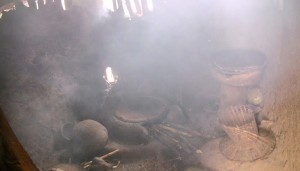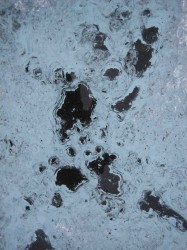ACE Report: Black Carbon: The Dirty Sidekick of CO₂
Open Google Doc of Black Carbon: The Dirty Sidekick of CO2
By Rebecca Anderson, ACE Director of Education
Heard of black carbon before? Yeah, you think so, but you’re not entirely sure what it is or how it’s related to climate change? You’re not alone – scientists everywhere are starting to pay more attention to this dirty sidekick of CO2…
What IS black carbon anyway?

What’s so bad about it?
Black carbon is nasty stuff for two main reasons:
First, it gets in your lungs and can cause asthma and infection, which can lead to malnutrition and cardiovascular disease. It can also cause cataracts. These effects are the worst in women, young children and the elderly in developing countries who spend the most time indoors around cooking fires. Black carbon in indoor smoke kills 1.5 million people every year – the 4th leading health risk in developing countries behind malnutrition, unsafe sex, unclean drinking water and sanitation. (EESI report)
As if that wasn’t enough, the second problem with black carbon is that it’s a major cause of climate change – a 2008 study ranked it as the #2 cause of climate change, second only to CO2 and greater than the effect of all the other greenhouse gases combined. (Ramathan and Carmichael, 2008) (This is an increase from estimates in the 2007 IPCC report.)
Just to be clear, black carbon does cause climate change, but it is NOT a greenhouse gas.
That’s because it’s not a gas – it’s a particle. It makes the earth warm up in two very different ways:
(1) In the atmosphere, black carbon absorbs incoming sunlight (not heat off the earth like a GHG does) and re-emits it as heat, warming up the atmosphere.
(2) When black carbon eventually falls out of the atmosphere by attaching to rain or snow, if it lands on a white surface, like snow or ice, it lowers the albedo (how reflective it is) of the surface, making it less white. The black particles absorb sunlight, melt the snow around them AND warm up the air. This is a major cause of warming in the Arctic and in the Himalayas especially – some reports estimate that black carbon is responsible for 1/3 of the warming in the Arctic (Center for Climate and Energy Solutions) and is just as important as CO2 in melting Himalayan glaciers (EESI).

Here’s the upside of black carbon:
Because it’s a particle, not a gas, it doesn’t last very long in the atmosphere (only a few days to weeks). That means that reducing the amount of black carbon people produce has immediate effects – it slows down climate change NOW, not in the decades to centuries that we’ll have to wait for changes in CO2 to take effect. Limiting black carbon emissions also slows down climate change in your backyard – less smog over cities to trap less heat if you live in Delhi, for example (see picture), and less ice and snow melting around you if you live in the Arctic.

AND less black carbon improves the health of people all over the world, particularly in developing countries. It’s a win-win situation for making people healthier and fighting climate change.
Black Carbon: The Dirty Sidekick of CO2
Student Worksheet
Name:
1. What is black carbon? Does it come from natural or man-made sources?
2. Give a couple examples of sources of black carbon.
3. What are the two reasons black carbon is harmful?
4. How does black carbon affect people? How many people die from it every year?
5. Is black carbon a greenhouse gas? How much climate change does it cause?
6. How does black carbon cause climate change?
7. What’s the one positive side of black carbon in terms of reducing it?
8. What are some ways to reduce black carbon emissions? (Come up with these on your own based on where it comes from or do some research.)
